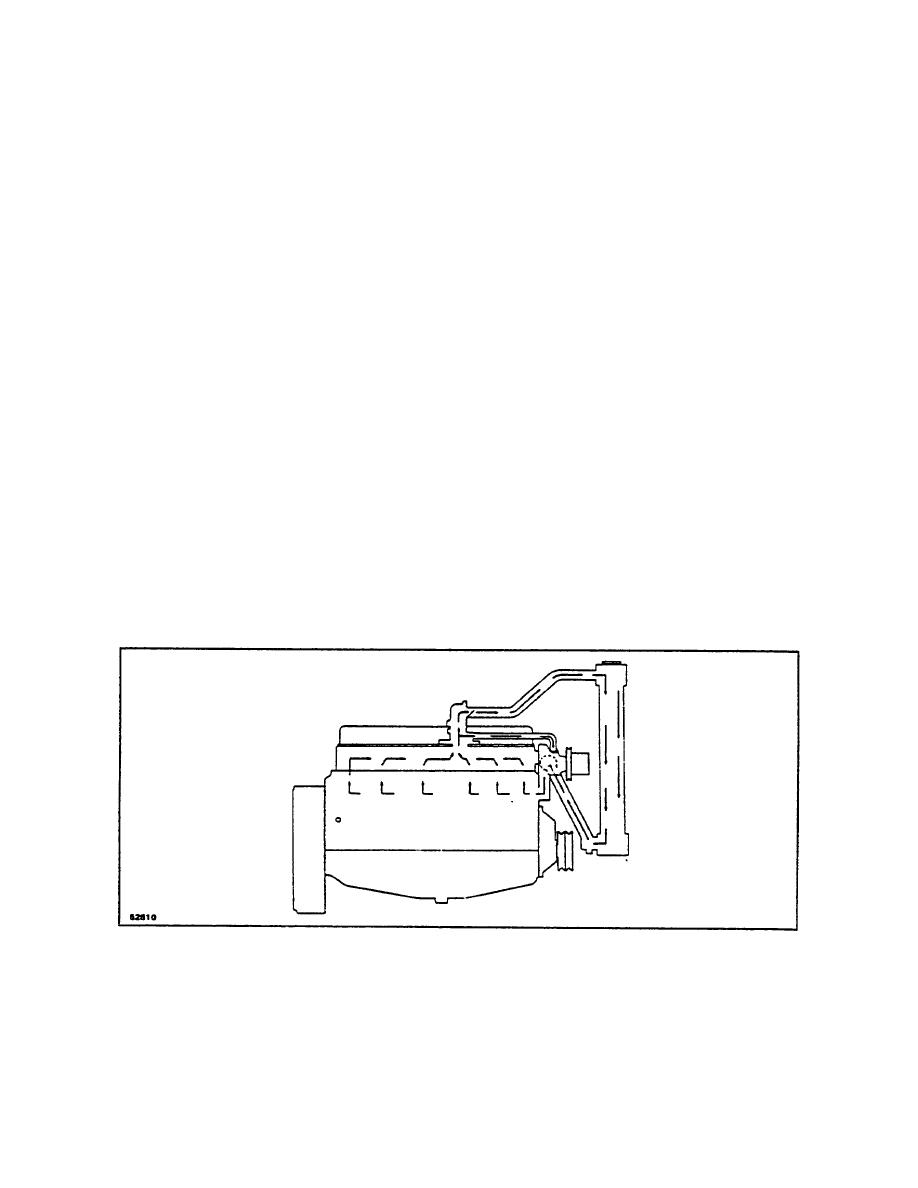 |
|||
|
|
|||
|
|
|||
| ||||||||||
|
|
 TM 10-3930-644-14&P
TOPIC 1. COOLING SYSTEM
A. DESCRIPTION
temperature exceeds 180 F, then the thermostat begins
to open and permits the coolant to flow into the radiator
The cooling system consists of the following component
where it is cooled by the belt-driven cooling fan. At
parts: the radiator, water pump and thermostat, the
approximately 200F, the thermostat will be completely
cooling fan and fan belt, the water passages in the
open and the coolant will flow at the maximum rate
cylinder block and head, and the necessary hoses and
through the radiator until the average temperature has
lines to complete the system.
been reduced and the thermostat closes.
The purpose of the cooling system is to carry off the
B. GENERAL MAINTENANCE
excess heat from the engine, and to hold the engine at
an efficient operating temperature. This is performed in
Proper cooling system maintenance
requires
the
the following manner:
observance of the following procedures:
The centrifugal water pump, which is driven by a "V" belt
1. Coolant: Keep sufficient cooling liquid in the
from the fan drive pulley, pulls the coolant from the
system, but do not overfill. A basic coolant is
bottom of the radiator and circulates it through the water
fresh, clean, soft water to which is added a 2%
passages in the engine block and cylinder head. The
solution of rust preventive soluble oil.
At
coolant then passes from the cylinder head of the engine
temperatures below 320F, the cooling system
through the thermostat and the upper radiator hose to
should be protected from freezing by adding a
the upper part of the radiator. The coolant then passes
sufficient quantity of a permanent type (glycol
from the top to the bottom of the radiator and is cooled
base) anti-freeze solution.
by the air flow pushed through the radiator core by the
cooling fan.
2. Cleaning: Drain, flush and refill the system
whenever an inspection reveals an accumulation
If the temperature of the coolant is less than 180 F, the
of rust or scale deposits. Always clean the
thermostat remains closed and the coolant is bypassed
cooling system seasonally, as well as before
back to the pump and is recirculated through the engine
and after using anti-freeze solutions.
without passing through the radiator. When the coolant
Figure 1-1. Coolant Flow Diagram (Typical)
M-155-1
2-39
|
|
Privacy Statement - Press Release - Copyright Information. - Contact Us |